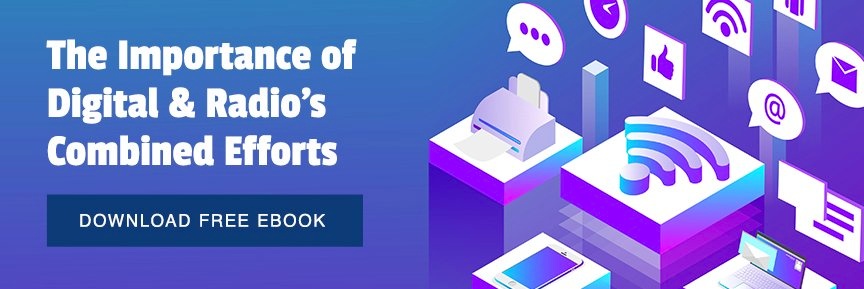Consumers have more media choices than ever, but AM/FM radio remains one of their favorites. The average American spends 1 hour and 44 minutes per day listening to local radio, according to Nielsen’s latest Total Audience Report. That’s more than several popular digital options, including game consoles, Internet on desktop computers and apps on tablets.
Both audiences and advertisers are making AM/FM stations a key part of their daily media diet. In Q3 2018, Americans 18+ devoted an average 17% of daily media use in Q3 2018, Nielsen reported.
Nielsen data confirms that radio is also a powerful tool for advertisers looking to connect with hard-to-reach consumers. That includes digitally-savvy young adults 18 to 34 who, contrary to popular belief, still listen to radio, which accounted for 16% of their daily media time. Radio is also a favorite for minority consumers. According to Nielsen, African-Americans and Hispanics listen to an average 1 hour, 55 minutes of radio per day, which is more than the average American adult.
This isn’t to say that radio doesn’t face fierce competition for consumers’ attention. Live and time-shifted TV are the most-used medium, representing 40% of media time for adults 18+, while apps on smartphones accounted for 34%. Compared to Q3 2017, TV-connected consoles and smartphone apps were the fastest-growing categories, while radio usage slipped ever so slightly, down an average of four minutes per day.
In today’s media market, TV and digital may get the lion’s share of ad dollars, but local radio is proven to be a highly effective complement. Even with just a sliver of an ad budget, radio can lift brand awareness and purchase intent. A recent study by Nielsen, Cumulus Media and Westwood One of a national quick service restaurant chain provides the latest affirmation. The campaign budget directed 20% of ad dollars to radio, with TV receiving the rest, but radio delivered much higher value. The campaign’s radio spots produced nearly the same reach and impressions as the TV spots. Of 77 million consumers touched by the ads, 49% of them were reached by AM/FM radio, Nielsen reported.
The study reaffirms what radio broadcasters have long been saying: Local radio produces results for advertisers, while also providing the high-quality news, information and entertainment that consumers are craving. In media, things may continue to change, but it is nice to know that local radio holds its value for listeners and marketers.

